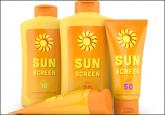Article

Resident Involvement in Policy-Making
- Author:
- Sheila Jalalat, MD
Politics greatly affect how physicians practice medicine. As dermatology residents, it is vital that we familiarize ourselves with the role of the...
Article

Allergic Contact Dermatitis for Residents
- Author:
- Sheila Jalalat, MD
Allergic contact dermatitis (ACD) is a very common skin disease faced by dermatologists. As residents, it is essential that we learn to...
Article

Yoga for Dermatologic Conditions
- Author:
- Sheila Jalalat, MD
As both a dermatology resident and yoga instructor, I find the potential correlation between the 2 disciplines to be interesting and a growing...
Article

Sunscreens Causing Cancer? The Facts
- Author:
- Sheila Jalalat, MD
Recent reports about sunscreen safety have received widespread media attention with headlines on many news broadcasts and Web sites claiming, “...
